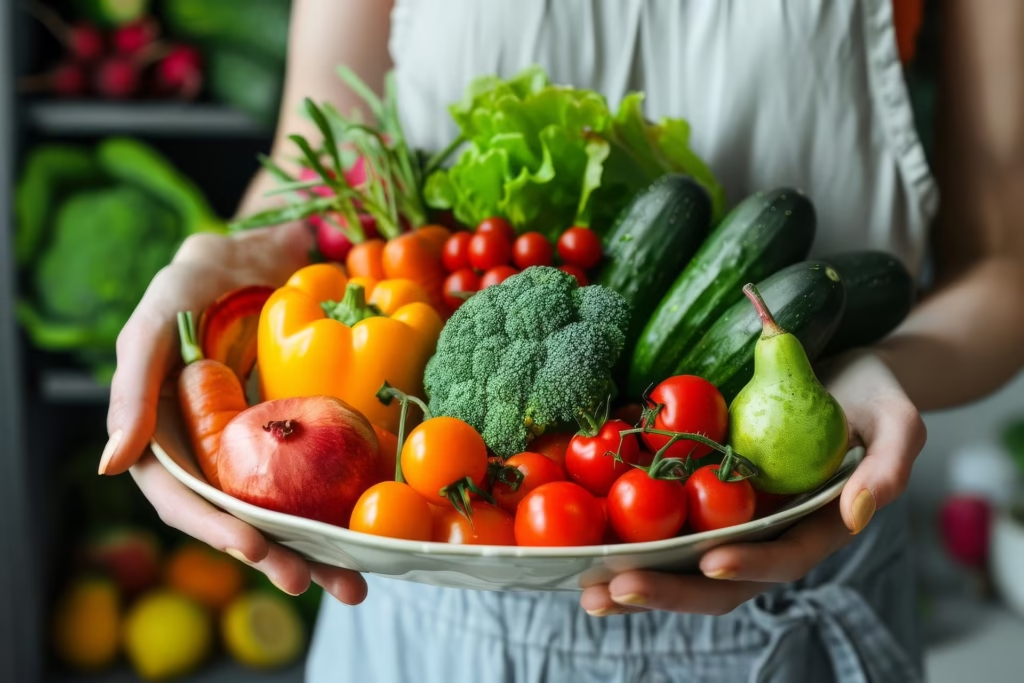
Every morning, as I sip my coffee and gaze at the bowl of vibrant fruits on my kitchen counter, I’m reminded of a simple truth: nature’s candy is more than just a sweet treat. Mixed fruits—think juicy strawberries, tangy kiwis, creamy bananas, and crisp apples—aren’t just delicious; they’re a powerhouse of health benefits that can transform your daily life. I learned this the hard way a few years ago when my energy levels were plummeting, and my doctor suggested I swap my processed snacks for a colorful fruit medley. That small change sparked a journey of discovery, and now I’m excited to share why eating mixed fruits daily can be a game-changer for your health, mood, and overall well-being. In this blog post, we’ll explore the science-backed benefits, practical tips, and creative ways to make mixed fruits a staple in your diet, all while keeping things engaging and relatable.
Why Mixed Fruits? The Power of Variety
Eating a single type of fruit is great, but combining a variety creates a nutritional symphony. Each fruit brings its own unique set of vitamins, minerals, and antioxidants to the table, working together to nourish your body in ways that processed foods simply can’t. According to Harvard Health, a diverse diet rich in colorful fruits maximizes nutrient intake and reduces the risk of chronic diseases. For example, the vitamin C in oranges boosts immunity, while the potassium in bananas supports heart health. When I started mixing fruits, I noticed my skin glowing and my digestion improving—small wins that added up over time.
The beauty of mixed fruits lies in their synergy. The antioxidants in berries, like blueberries and raspberries, fight free radicals, while the fiber in apples keeps your gut happy. This variety ensures you’re not missing out on essential nutrients, making your diet both balanced and exciting. Plus, the vibrant colors and textures make every bite a sensory delight, turning a simple snack into a mini-adventure.
Nutritional Goldmine: What’s in Your Fruit Bowl?
Let’s dive into the specific nutrients that make mixed fruits a daily must-have. Fruits are nature’s multivitamin, packed with essentials that support every system in your body. Here’s a breakdown of what you’re getting when you enjoy a bowl of mixed fruits, backed by insights from WebMD:
- Vitamins and Minerals: Oranges and strawberries are bursting with vitamin C, which strengthens your immune system and promotes collagen production for healthy skin. Bananas and avocados provide potassium, crucial for blood pressure regulation. Mangoes offer vitamin A, supporting vision and skin health.
- Fiber: Apples, pears, and berries are rich in dietary fiber, which aids digestion, regulates blood sugar, and promotes satiety, helping with weight management.
- Antioxidants: Blueberries, pomegranates, and grapes contain polyphenols and flavonoids, which combat oxidative stress and reduce inflammation, lowering the risk of heart disease and cancer.
- Natural Sugars: Unlike refined sugars, the fructose in fruits comes with fiber and nutrients, providing a steady energy release without the crash.
When I started incorporating a mix of these fruits daily, I felt more energized and less reliant on sugary snacks. It’s like giving your body a daily dose of vitality, straight from nature.
Boosting Physical Health: From Heart to Gut
Eating mixed fruits daily isn’t just about feeling good—it’s about fortifying your body against disease. Research from the American Heart Association shows that a diet rich in fruits can lower the risk of heart disease, stroke, and hypertension. The potassium in bananas and the fiber in apples help regulate blood pressure, while antioxidants in berries reduce cholesterol levels. I remember my uncle, a heart patient, who saw his cholesterol drop after adding a fruit salad to his lunch routine.
Fruits also work wonders for your digestive system. The fiber in pears and prunes promotes regular bowel movements, preventing constipation and supporting gut health. Probiotics might get all the hype, but the prebiotic fiber in fruits like bananas feeds your gut’s good bacteria, as noted by Healthline. Since I started eating mixed fruits, my digestion has been smoother, and those pesky bloating episodes are a thing of the past.
Mental Health and Mood: The Fruit Connection
Did you know that what you eat can affect how you feel? Mixed fruits aren’t just good for your body—they’re a mood booster too. The vitamin C in citrus fruits reduces stress hormones, while the magnesium in bananas supports serotonin production, the “feel-good” neurotransmitter. A study from Psychology Today suggests that diets high in fruits and vegetables are linked to lower rates of depression and anxiety.
I vividly recall a stressful week when I was juggling work deadlines and family responsibilities. Instead of reaching for chocolate, I blended a smoothie with mango, pineapple, and spinach. The vibrant colors and refreshing taste lifted my spirits, and I felt calmer almost instantly. It’s amazing how something as simple as a fruit mix can brighten your day.
Weight Management: A Sweet Solution Without Deprivation
If you’re looking to maintain or lose weight without feeling deprived, mixed fruits are your best friend. Their high fiber and water content make you feel full longer, reducing the urge to snack on calorie-dense foods. According to Mayo Clinic, incorporating low-calorie, nutrient-rich foods like fruits into your diet supports sustainable weight loss.
Here’s how I make it work: instead of a bag of chips in the afternoon, I munch on a bowl of diced watermelon, grapes, and kiwi. The natural sweetness satisfies my cravings, and the fiber keeps me full until dinner. Plus, the low calorie count means I can enjoy generous portions without guilt. It’s a win-win!
### Comparison Table: Mixed Fruits vs. Common Snacks
| Aspect | Mixed Fruits | Common Snacks (e.g., Chips, Cookies) |
|---|---|---|
| Nutritional Value | High in vitamins, minerals, fiber, and antioxidants | High in sugar, salt, and unhealthy fats |
| Calorie Content | Low (e.g., 1 cup of mixed fruits ~80–100 kcal) | High (e.g., 1 oz chips ~150 kcal) |
| Satiety | High due to fiber and water content | Low, often leads to overeating |
| Health Impact | Reduces risk of chronic diseases | Increases risk of obesity, heart disease |
| Cost | Affordable, especially seasonal fruits | Often expensive for premium brands |
| Taste Variety | Diverse flavors and textures | Uniform, often artificial flavors |
This table highlights why mixed fruits are a superior choice for daily snacking. They’re not only healthier but also more satisfying and budget-friendly.
Creative Ways to Incorporate Mixed Fruits Daily
Now that you’re sold on the benefits, how do you make mixed fruits a seamless part of your routine? Here are some practical, fun ideas inspired by my own experiments and tips from EatingWell:
- Smoothie Bowls: Blend bananas, berries, and mango with a splash of almond milk, then top with granola and chia seeds for a nutrient-packed breakfast.
- Fruit Salads with a Twist: Mix diced apples, pineapple, and grapes with a drizzle of honey and a sprinkle of mint leaves for a refreshing side dish.
- Skewers for Parties: Thread strawberries, melon balls, and kiwi onto skewers for a colorful, kid-friendly snack.
- Frozen Treats: Freeze grapes or banana slices for a naturally sweet, cooling treat on hot days.
- Pair with Protein: Combine fruits with Greek yogurt or cottage cheese for a balanced snack that keeps you full longer.
I love prepping a big fruit salad on Sundays to grab-and-go during the week. It saves time and ensures I’m always ready for a healthy snack. Experiment with seasonal fruits to keep things exciting and cost-effective.
Potential Downsides and How to Address Them
While mixed fruits are a nutritional powerhouse, there are a few considerations to keep in mind. Some people worry about the sugar content in fruits, but the fiber and nutrients mitigate the impact, unlike processed sugars. If you have diabetes, consult a dietitian to balance fruit intake, as advised by the American Diabetes Association.
Pesticides on fruit skins can also be a concern. Opt for organic when possible, or thoroughly wash fruits with a vinegar-water solution, as recommended by Environmental Working Group. Lastly, if you have allergies, introduce new fruits gradually to monitor reactions. I once had a mild reaction to kiwi, so now I pair it with familiar fruits to avoid surprises.
FAQ: Your Burning Questions About Mixed Fruits Answered
Q: How many servings of mixed fruits should I eat daily?
A: The USDA recommends 1.5–2 cups of fruit daily for adults, depending on age and activity level. A mix of 3–4 different fruits can easily meet this goal.
Q: Can I eat mixed fruits on an empty stomach?
A: Yes, fruits are gentle on the stomach and can be a great way to start the day. However, if you have acid reflux, pair them with a protein like yogurt to buffer acidity.
Q: Are frozen or canned fruits as healthy as fresh?
A: Frozen fruits retain most nutrients and are a great option, especially when out of season. Canned fruits can be healthy if packed in water or juice, not syrup. Check labels for added sugars.
Q: Can eating too many fruits cause weight gain?
A: It’s unlikely, as fruits are low in calories and high in fiber. Moderation is key—stick to recommended servings to avoid excess sugar intake.
Q: What’s the best time to eat fruits?
A: Any time works! I enjoy fruits as a morning boost or afternoon snack. Eating them before meals can also aid digestion and curb overeating.
Conclusion: Make Mixed Fruits Your Daily Ritual
As I sit here, munching on a bowl of diced mango, strawberries, and blueberries, I’m reminded of how far I’ve come since those low-energy days. Mixed fruits have become my daily ritual—not just for their health benefits, but for the joy they bring to my plate. From boosting my immunity and heart health to lifting my mood and keeping my weight in check, these colorful gems have transformed my lifestyle in ways I never imagined. The science is clear: a daily dose of mixed fruits reduces disease risk, enhances mental well-being, and makes healthy eating deliciously simple.
Ready to make mixed fruits a part of your life? Start small—swap one processed snack for a fruit salad, experiment with smoothies, or try a new fruit each week. Visit your local farmer’s market to discover seasonal varieties, and don’t be afraid to get creative with recipes. Your body, mind, and taste buds will thank you. Here’s to vibrant health, one fruit at a time!
